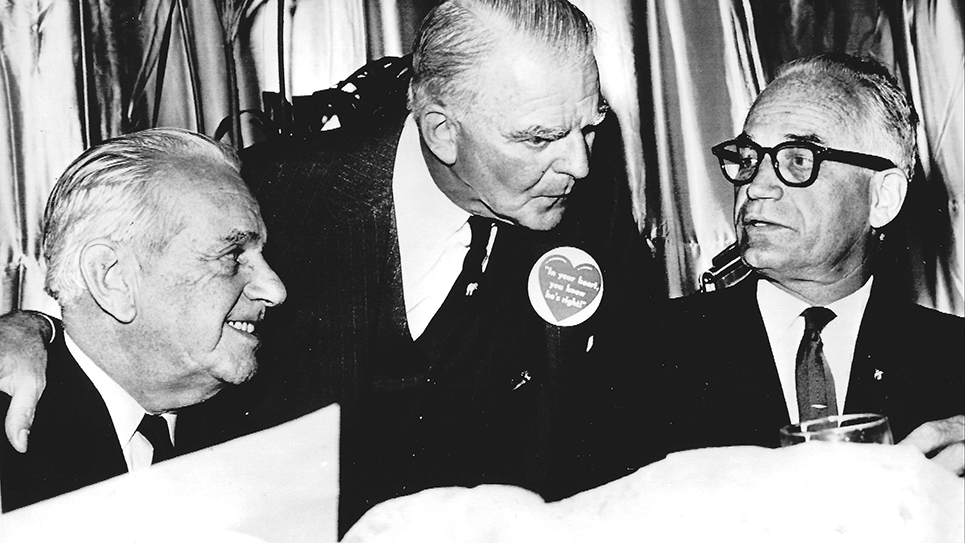A ‘neutral site’ venue for the Mid-South
By Tom Mattingly
Many Tennessee fans have no idea where Crump Stadium was located, for whom it was named, and what significance it holds in University of Tennessee football history. With the days of the Vols playing in Memphis likely in the rearview mirror, an explanation is in order.
Crump Stadium was located near downtown Memphis, next to Memphis Central High School, 1301 Linden Avenue at S. Cleveland Street. It was built in 1934 under the auspices of the Works Projects Administration, better known as the W.P.A.
The venue was named for former Mayor Edward Hull Crump in 1934. He was known as the “Red Snapper” and was the famed political boss in Shelby County and across the state of Tennessee. “Boss Crump” said he was “flattered” by being so recognized, but allowed that such honors should really be handed out posthumously.
After a season-ending tie 0-0 between Tennessee and Ole Miss in December 1936, the city decided to market the stadium as a “neutral site” venue to bring in teams and fans from across the Mid-South. There were frequent match-ups between Tennessee and Mississippi, Tennessee and Mississippi State, and the Rebels against Arkansas, with a Texas-Arkansas game also played there.
The Vols played Ole Miss 15 times at Crump Stadium and Mississippi State five times before major athletic events in the Bluff City moved to a new stadium on the Fairgrounds in 1965.
In 1938, University of Tennessee President Dr. James D. Hoskins had offered Bob Neyland some free coaching advice shortly before the Ole Miss game, again in Memphis, when the Vols were 9-0 and headed to the Orange Bowl. UT historians James Riley Montgomery, Stanley John Folmsbee and Lee Seifert Greene shared the story.
“It was Hoskins’ custom from time to time to walk down in the afternoons and watch football practice, often accompanied by J.P. Hess,” they wrote.
“Hoskins’ mind seemed to be on something — I don’t think he spoke on the whole trip down there to the field,” Hess recalled.
“I want you to go down next Saturday to Memphis and beat Ole Miss 50-0,” Hoskins told Neyland. Even in those days, the margin of victory was a big deal.
“Well, all right, Doctor, we’ll try to do that,” Neyland replied just before the duo left.
The final was 47-0, a result apparently satisfying to all parties. The authors noted that the Sugar Bowl committee might have influenced Hoskins’ attitude when it said, “Tennessee had not won by large enough margins throughout the season.”
Under rookie head coach John Howard Vaught, Ole Miss handed Tennessee a 43-13 defeat there in 1947, the worst defeat in Bob Neyland’s coaching tenure. There was also a 16-13 loss a year later, also in Memphis. Neyland remembered both defeats, and the next three games were settled by scores of 35-7 in 1949 in Memphis, 35-0 in 1950 in Knoxville, and 46-21 in 1951, this game played in Oxford.
Over the years, Crump Stadium joined Shields-Watkins Field and the Orange Bowl as having the worst press boxes in the country, this dubious designation having been voted on by the Football Writers Association of America. The new press box built in 1962 in Knoxville was designed to alleviate that problem, at least to Neyland’s way of thinking. Nothing apparently ever happened to change the writers’ view of the other venues.
There were other memorable moments on the Crump Stadium greensward. In 1954, sophomore tailback John Terrill Majors made his Vol debut in a 19-7 win over Mississippi State, scoring on an 80-yard run. Marvin West remembered being the only media member to recognize Majors, having been in a geography class with him that fall. That quick disclosure might have brought Marvin an instant dose of credibility with older media members.
In November 1959, Tennessee went to Memphis to play Ole Miss the week after the Vols had won 14-13 over LSU in one of the titanic upsets in Vol gridiron history. Tennessee head coach Bowden Wyatt had told a friend the night before the game the Rebels would win decisively, and they did, 37-7, breaking open a 10-7 game in the second half. That game started an Ole Miss win streak that lasted until 1967. It also started a three-game Vol losing streak to end the decade of the 1950s.
Mississippi State won 7-6 in 1962, with MSU assistants and former Vols Ken Donahue and Majors overseeing the State defense.
The Vols won their Crump Stadium finale in 1964, in a night contest against Mississippi State. The final was 14-13, a verdict giving Doug Dickey his first SEC win at Tennessee. Carl Ellis stopped MSU’s Hoyle Granger on a two-point play that gave the Vols the edge. A crowd of 24,609 was in attendance.
In 1965, the Vols played Ole Miss and UCLA in the new stadium and have played there ever since.
The echoes of Crump Stadium are not far away, however, as games at the old stadium created their share of memories contributing to Tennessee legend and tradition.






